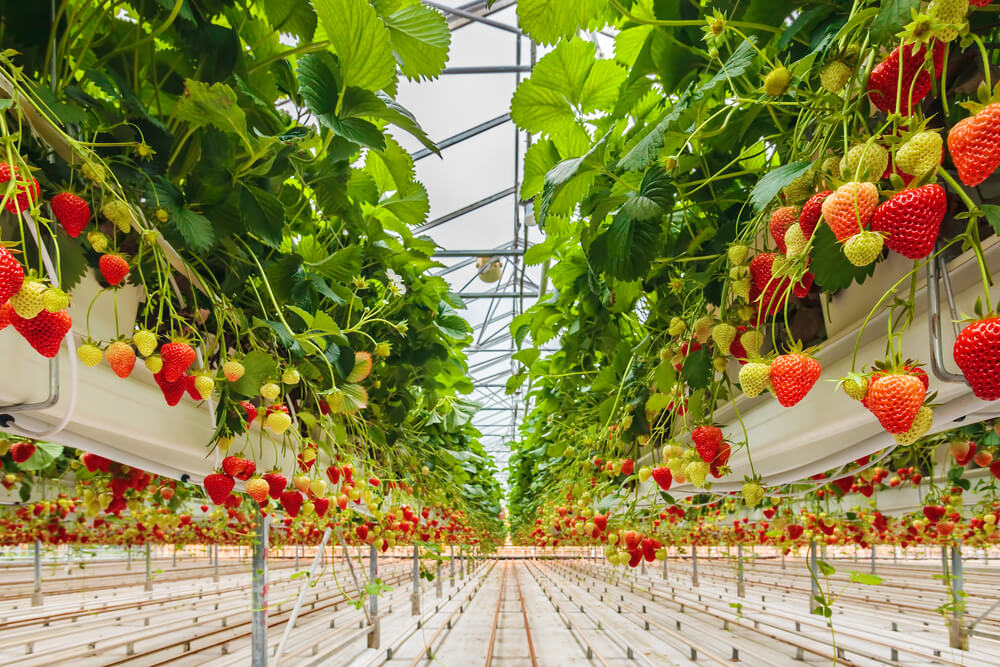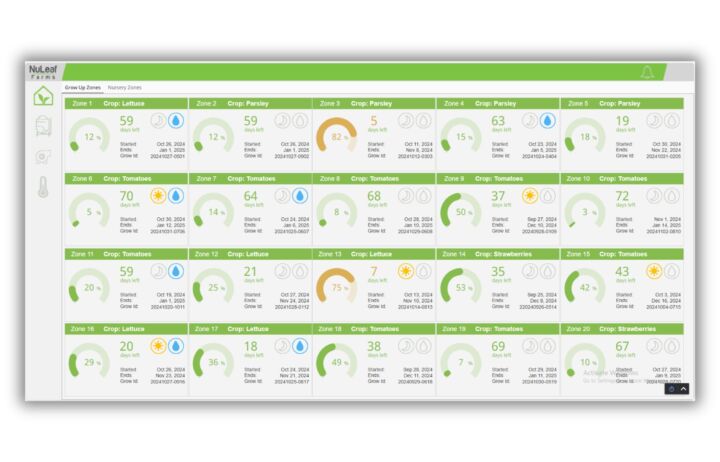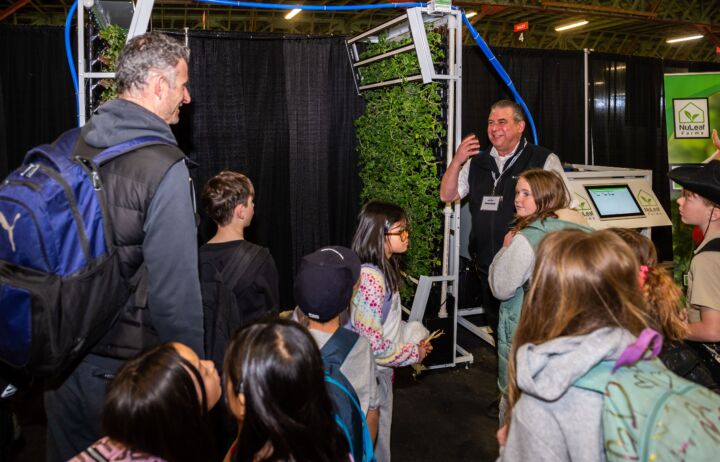
Maximizing Crop Yields with Advanced Indoor Farming Techniques
Indoor farming presents unique challenges and opportunities compared to traditional outdoor methods. With the increasing global population and urban density, maximizing crop yields within limited space has never been more crucial. This article explores several advanced indoor farming techniques that can significantly enhance productivity and sustainability.
All About Indoor Farming Systems
Vertical farming is reshaping agriculture with its innovative approach to growing crops in controlled environments, adaptable to the constraints of urban spaces. Vertical farms efficiently grow crops without relying on pesticides or herbicides by utilizing buildings or skyscrapers, showcasing their sustainability and growing popularity.
Hydroponics
Hydroponics is a soilless cultivation method in which plants are grown in nutrient-rich water. Due to its numerous advantages over traditional soil-based cultivation, this technique is prevalent in urban agriculture, commercial greenhouses, and home gardening. In hydroponics, plants are supported by mediums like perlite, coconut coir, or Rockwool, which provide stability but do not supply nutrients. Nutrients are delivered to the roots via water, facilitating efficient uptake and faster growth.
Advantages of Hydroponics:
- Water Conservation: Hydroponics uses less water than soil-based methods since the nutrient solution is recirculated, minimizing evaporation and runoff.
- Space Efficiency: This technique accommodates a high density of plants in limited spaces, which is ideal for urban and indoor settings.
- Reduced Disease and Pests: Fewer soil-borne diseases and pests occur, decreasing the need for pesticides.
- Faster Growth and Higher Yields: Direct nutrient delivery accelerates growth, resulting in larger harvests.
- Cleaner Produce: Plants are not grown in soil, reducing contamination from soil-borne pathogens.
Challenges of Hydroponics:
- Initial Costs: The setup is generally costlier due to specialized equipment.
- Technical Complexity: Managing nutrient levels, pH, and water quality can be more demanding than soil-based systems.
- Electricity Dependence: Systems rely on electricity, posing risks of power outages and higher energy use.
Aeroponics
Aeroponics is another innovative method of plants growing with their roots suspended in the air, receiving nutrients from a mist or fog. Due to its efficiency and effective use of space, this method is beneficial in urban settings, vertical farms, and even space exploration.
Benefits of Aeroponics:
- Water Efficiency: It uses significantly less water as the nutrient mist is recirculated.
- Space-Saving: The vertical, compact design fits well in constrained spaces.
- Disease and Pest Reduction: The absence of soil reduces common diseases and the need for chemical treatments.
- Enhanced Growth and Yields: Nutrients delivered directly to the roots boost growth speeds and crop output.
- Cleaner Produce: Lack of soil means produce is generally cleaner and less prone to contamination.
Drawbacks of Aeroponics:
- Higher Initial Costs: Setup costs are elevated due to the need for specialized misting equipment.
- Complexity in Maintenance: Requires vigilant management of nutrient levels and system conditions.
- Reliance on Power: Like hydroponics, aeroponics depends heavily on electricity, which can be a vulnerability.
Aquaponics
Aquaponics combines hydroponics and aquaculture, growing plants and fish concurrently. It’s a sustainable method that has gained traction in urban agriculture and small-scale farming. Fish waste provides nutrients for plants and purifies the water, creating a beneficial cycle.
Advantages of Aquaponics:
- Resource Efficiency: Uses less water than separate hydroponics or aquaculture systems by recycling water within the system.
- Optimal Space Use: Supports dense configurations of plants and fish, ideal for limited spaces.
- Reduced Pests and Diseases: Fewer soil-based issues mean less need for pesticides.
- Sustainable Food Production: Offers diverse and sustainable food sources by raising fish and plants simultaneously.
- Environmental Benefits: Minimizes the release of nutrient-rich wastewater, reducing pollution.
Challenges of Aquaponics:
- Higher Setup Costs: Requires significant investment for initial setup and equipment.
- Complex Management: Monitoring and balancing the needs of both plants and fish can be challenging.
- Electricity Dependency: Relies on continuous power supply for water circulation and filtration systems.
Choosing Between Hydroponics, Aeroponics, and Aquaponics
The choice between these vertical farming techniques depends on specific factors such as available space, resource availability, crop selection, and environmental impact considerations. Each method has distinct advantages and is suitable for different scenarios based on your agricultural goals and operational constraints.
As technology advances, these vertical farming techniques are expected to become more efficient and widely accessible, further revolutionizing urban agriculture and contributing to sustainable food production practices.
Types of Indoor Farming Systems
Six common indoor gardening systems offer unique benefits and are suitable for different plants and spaces.
Wick System
The wick system is the simplest form of hydroponic system, ideal for small-scale indoor gardeners and beginners. It doesn’t require any pumps or electrical components. A wick connects the plant container to a reservoir filled with nutrient solution, passively transporting water and nutrients to the plant roots.
Best For: Small herbs and non-demanding plants like lettuce or microgreens.
Deep Water Culture (DWC)
In DWC systems, plants are suspended in net pots above a reservoir of nutrient-rich water, allowing the roots to dangle directly into the solution. An air pump supplies oxygen to the root zone, promoting rapid growth. This system is known for its simplicity and high efficiency.
Best For: Leafy greens such as lettuce, kale, and herbs, as well as faster-growing, water-loving plants.
Nutrient Film Technique (NFT)
NFT systems involve the continuous flow of nutrient-rich solution over the roots of plants, which are housed in channels that tilt slightly to allow the solution to move via gravity. This system ensures roots receive abundant oxygen, water, and nutrients.
Best For: A variety of greens and herbs, making it popular for commercial growers due to its scalability.
Ebb and Flow (Flood and Drain)
This system periodically floods the plant root zone with a nutrient solution and drains it back into the reservoir. A timer connected to a pump typically controls this action, providing periods of nutrient uptake and aeration.
Best For: A wide range of plant types, including larger fruiting plants, ornamentals, and multiple plant types in the same system.
Drip System
The drip system uses a pump to deliver the nutrients through a network of tubes and emitters to each plant. The system can be set up to recirculate the unused solution or to run to waste. Drip systems can be precisely adjusted and are efficient in water and nutrient use.
Best For: Larger or more demanding plants like tomatoes, peppers, and cucumbers, as well as commercial-scale operations.
Aeroponics
Aeroponic systems suspend plants in the air, where the roots are regularly misted with a nutrient solution via high-pressure pumps. This method maximizes oxygen exposure to roots, promoting rapid growth and high yields.
Best For: Fast-growing, high-value crops like herbs, leafy greens, and root crops in settings where precise control over the growing environment is possible.
Each system offers a unique approach to indoor gardening, allowing for flexibility in how and what you can grow indoors. Depending on your needs, space, and desired plants, you can choose a system that best fits your gardening goals.
Indoor Farming Considerations and Techniques
The Role of Lighting in Indoor Farming
Proper lighting is necessary for the growth and productivity of indoor crops. LED lights, in particular, offer benefits compared to other types of lighting, such as compact fluorescent lights and high-pressure sodium lights, which are cheaper but less energy-efficient and more costly to maintain.
To maximize yields, it’s crucial to maintain the appropriate distance between the LEDs and the plants, ensuring optimal light intensity without overheating the plants. Additionally, using the right light spectrum can trigger desired physiological responses in the plants, affecting their growth and the type of growth (biomass vs. reproductive).
The Impact of Proper Climate Control
Controlling the climate within an indoor farming setup offers a significant advantage. It eliminates the unpredictability of outdoor conditions such as droughts or cold fronts, which can devastate crops. Effective climate control involves more than just setting a room to a standard temperature; it requires precise temperature adjustments, humidity, air circulation, and irrigation specific to each crop growth stage. Farmers can significantly enhance their crop production and overall efficiency by mastering these elements.
Nutrient Management
Unlike traditional farming, where soil variability can affect nutrient distribution, indoor farming often utilizes soilless media. This setup allows for more controlled and uniform nutrient application, which is essential for the health and productivity of the crops. Hydroponic systems, for instance, enable farmers to tailor the nutrient mix to the needs of each plant, promoting uniform growth across the entire crop.
Monitoring the plants for any signs of nutrient deficiency or excess and adjusting the nutrient solutions can prevent potential yield losses.
Monitoring and Adaptive Techniques
Ongoing monitoring and adaptation are vital in indoor farming. By paying close attention to the plants’ responses—such as changes in leaf colour or signs of stress—farmers can quickly address issues like nutrient deficiencies or environmental stresses. Adapting indoor farming strategies based on real-time data helps maintain the crops’ health and optimize the conditions for future growth cycles.
The Future of Indoor Farming
The continuous advancements in technology and farming techniques promise even greater efficiencies and potential for indoor farming. For example, innovations in AI and machine learning could lead to more sophisticated monitoring and control systems that fine-tune the farming environment to each plant’s needs. Additionally, ongoing research into new soilless cultivation methods and customized nutrient formulas can further enhance the viability and productivity of indoor farming operations.
With its unique challenges, indoor farming offers a fertile ground for innovation and efficiency. By leveraging high-density vertical farming systems, optimizing lighting setups, controlling the indoor climate, and managing nutrients precisely, farmers can maximize their crop yields effectively. As technology evolves, opportunities to refine these techniques will also evolve, making indoor farming a crucial component of sustainable agriculture in an increasingly urbanized world.
Learning Advanced Indoor Farming Techniques from NuLeaf Farms
At NuLeaf Farms, we are dedicated to revolutionizing agriculture with our state-of-the-art indoor farming solutions. We provide everything from compact hydroponic systems for home enthusiasts to large-scale installations for commercial operations. Our systems are designed for anyone embracing sustainable and secure food production practices, ensuring you can grow fresh, healthy produce all year round, regardless of external climate conditions.
We don’t just sell products; we empower our community through education. By offering comprehensive training and workshops, we equip new and experienced farmers with the knowledge they need to succeed in the rapidly evolving world of indoor farming. Whether you’re looking to start a small garden in your home or a commercial farm in your community, NuLeaf Farms is your partner in growth, providing customized solutions that fit your specific needs.
Join us in growing the next generation of farmers. Explore our products, benefit from our expertise, and let us help you achieve your farming aspirations. Start your sustainable agriculture journey today and move towards a more food-secure future. Visit NuLeaf Farms to learn more and view our range of indoor farming solutions.








